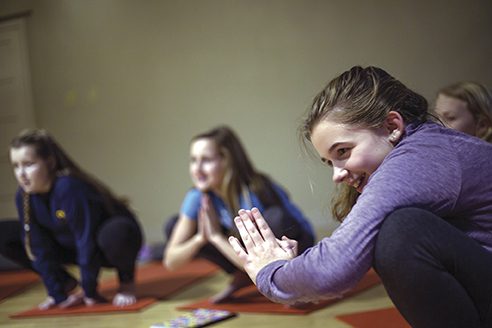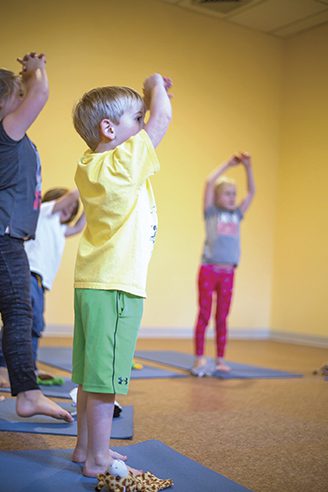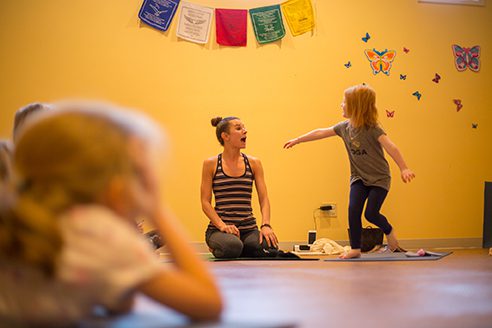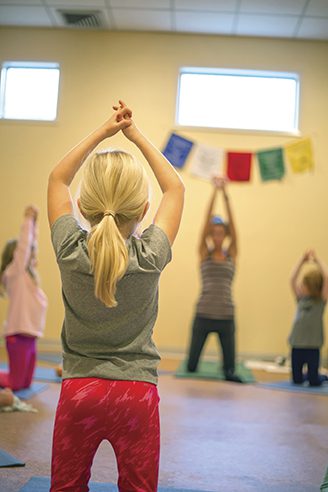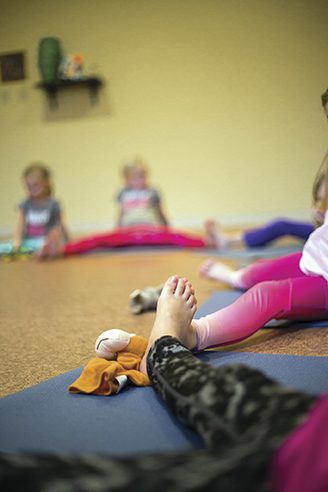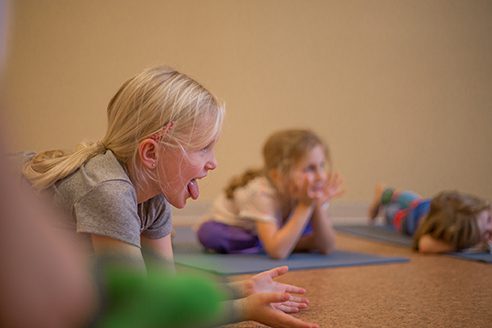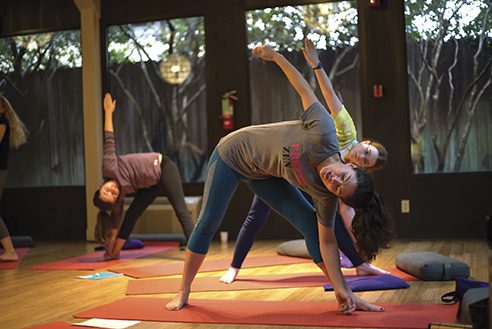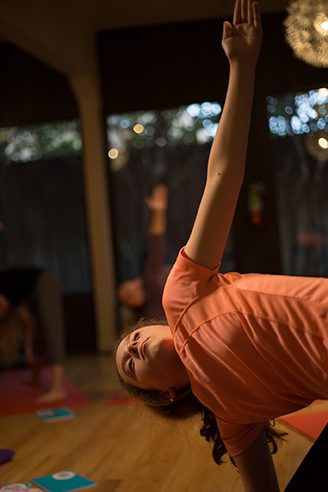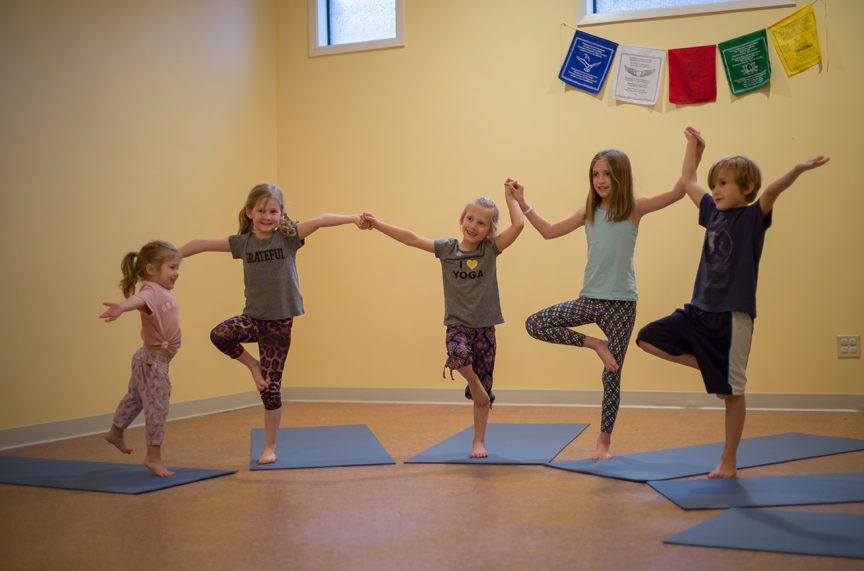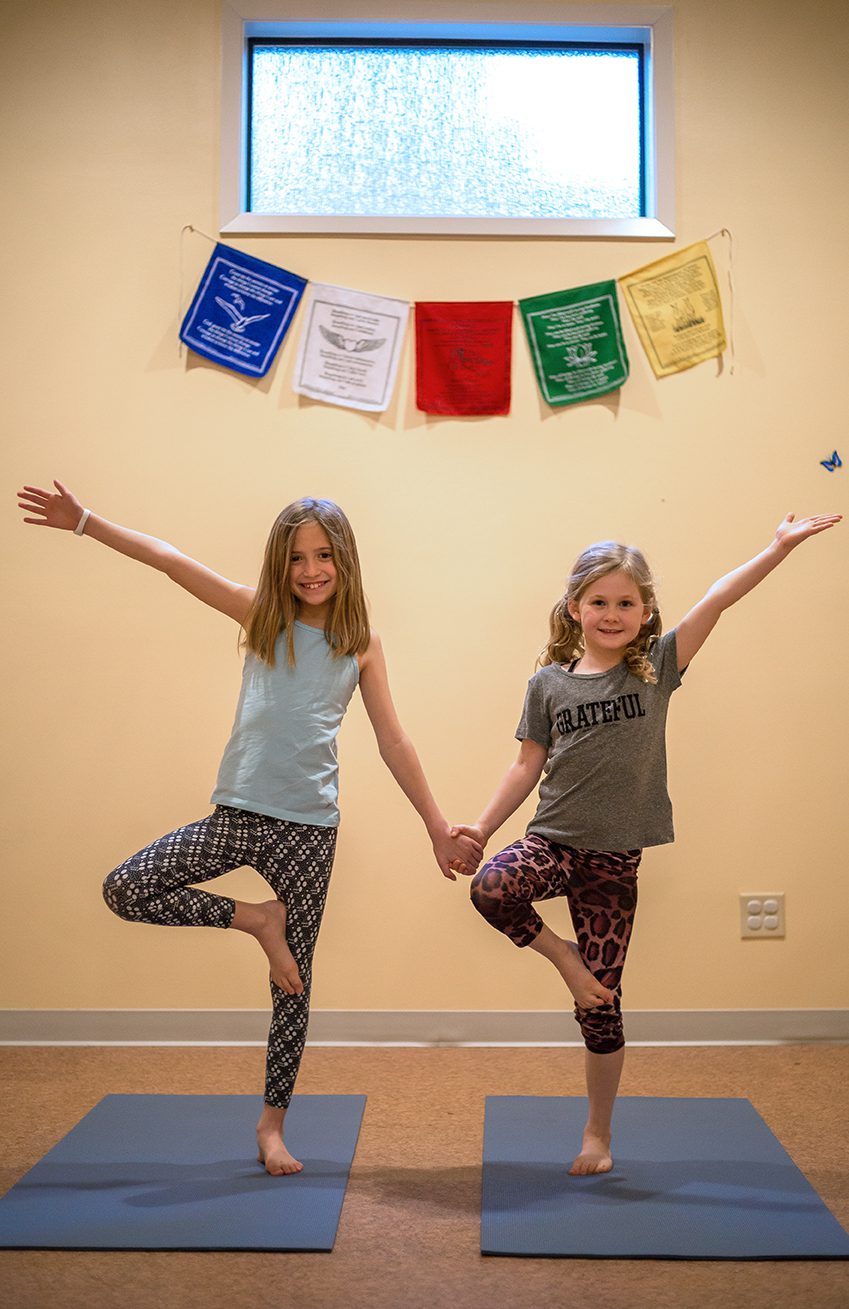If you could give your child lifelong tools to benefit them physically and mentally in just 45 minutes a week, would you add it to their schedule? If you did, you would enhance their athletic and academic performance and many more areas of their life. The physical gains from yoga are more than just flexibility, which alone can prevent injuries in sports, but also increases balance, strength, coordination and stamina. Unlike other physical activities, yoga joins the body and mind through movement and breath. This method allows individuals to gain increased focus, reduce stress and self-regulate to calm themselves. Most adults enjoy yoga for the calm sensation it gives them after class. In our fast paced society, children can be very anxious and stressed, and yoga is a tool to give them the same relaxation that adults experience.
The kids’ classes at Breathe are 45 minutes to one hour long classes which are fun and playful because that is how children learn. You can expect a typical children’s class to contain the following elements (We say typical because children’s classes are never predictable!) After greetings, each class starts with breathing exercises not only to center the children but to also teach them how to use the breath to ease their nerves in stressful situations. The breath we teach to the little ones may be like a balloon, a volcano, or many other creative ways to draw their attention to their breath and to slow it down. The older children may do some breath counting to learn to regulate their breath which will calm the nervous system. These techniques can be taken off the mat and into their daily lives to ease anxiety and to control their emotions. We have seen this work firsthand with our own children when they have used a breathing break to calm themselves. It is, however, called a practice for a reason. After the breathing exercises, class direction may vary for different ages. The youngest yogis may go on an imaginative adventure infused with lots of yoga poses. It is a creative way to hold their attention while demonstrating the yoga postures. Putting their bodies in these shapes promotes dexterity and coordination. The yoga poses will also prolong the natural flexibility of the little yogis. The older kids’ classes may move toward different sequences of poses to increase flexibility, balance and strength. For these children, we also introduce more challenging poses to teach them the patience needed for the practice and give them a self-confidence boost when they accomplish the pose.
Classes of all age groups include some balance postures also. Balance postures are advantageous for any child. As with the other postures, they help with dexterity but they also greatly improve focus due to the concentration it takes to maintain the postures. Enhanced focus can be very beneficial in the classroom or in sports. This may also be immensely valuable for a child that has an attention deficit disorder. Non-competitive games and partner or group poses are also incorporated into classes to encourage cooperation and improved social skills. These games and poses are done in a safe, non-judgmental atmosphere, so children have the opportunity to be themselves. The kids love this part of class! Children of all ages need time to play, and these activities teach them acceptance, compassion and teamwork.
The pace of each of our kids’ classes may change depending on the energy of the room, but no matter the degree of energy of the class, we always end in stillness. Movement makes stillness achievable for the kids. At the end of class, children stay on their mats where they begin to wind down and make their way to our final pose, savasana. In savasana, children have the opportunity to lie on their backs with eye pillows or roll their bodies in the mat like a burrito to get comfortable. To help get them settled, we utilize music, imagery or anything to help them find one focus. Here they learn to relax their body and ease their little minds. This counteracts the overstimulated environment which most kids have become accustomed. Just like adults, the kids welcome this much needed time of stillness and rest.
The icing on the cake for our program is that we weave positive themes into our class to instill yogic qualities such as kindness, patience, gratitude and presence. To bring home the topic we tell stories or give quotes to stimulate positive thinking and to ponder several of these yogic principals. Examining their thought and behavior patterns allows them to become more mindful. Mindfulness is simply becoming aware of your thoughts so that you can direct them. After all, life is full of stressful situations but it is not the situation that causes stress, it is your thoughts about it. Implementing these yoga practices can lead your child to a path of peace and well-being for life.

